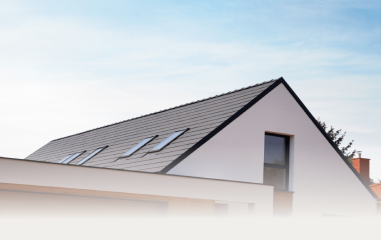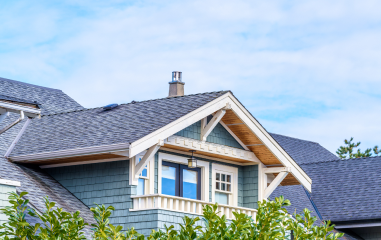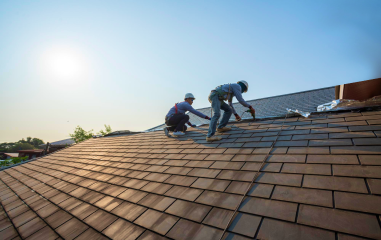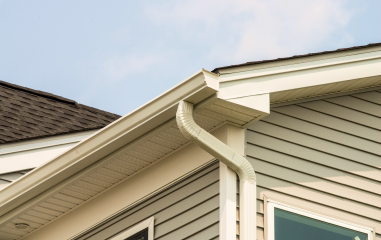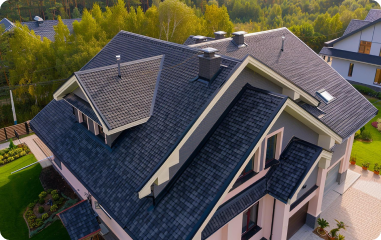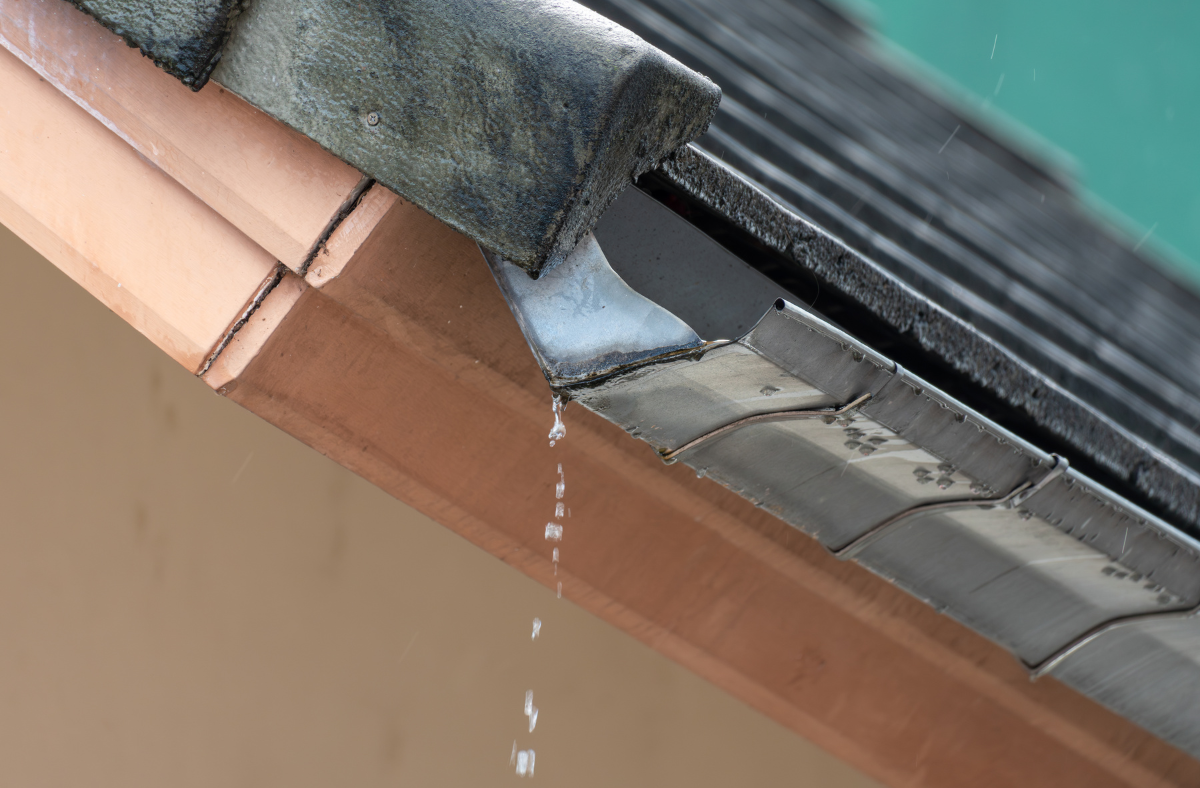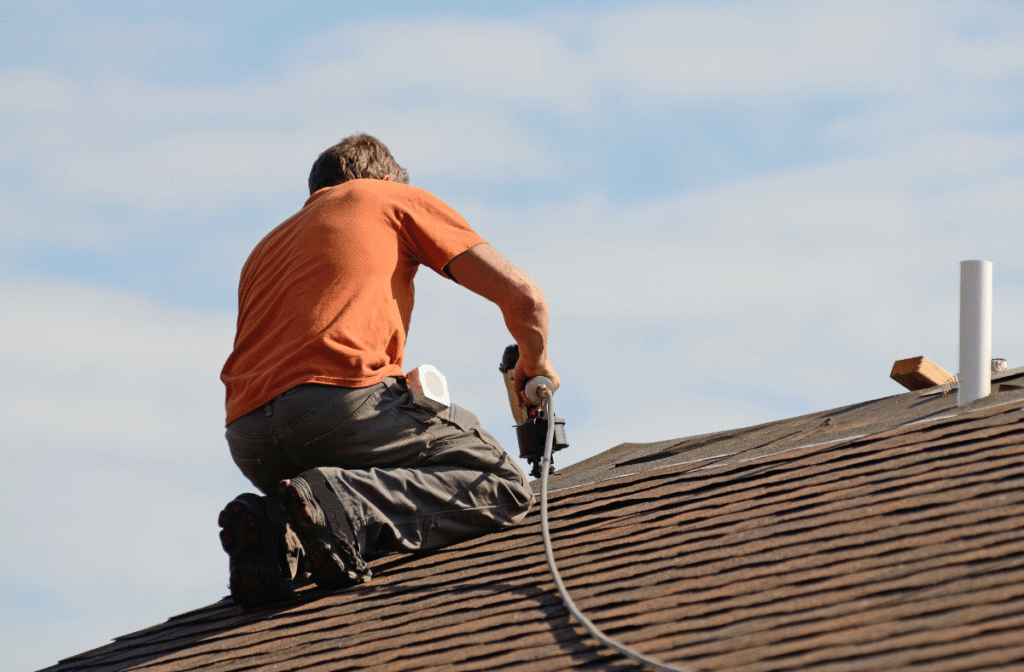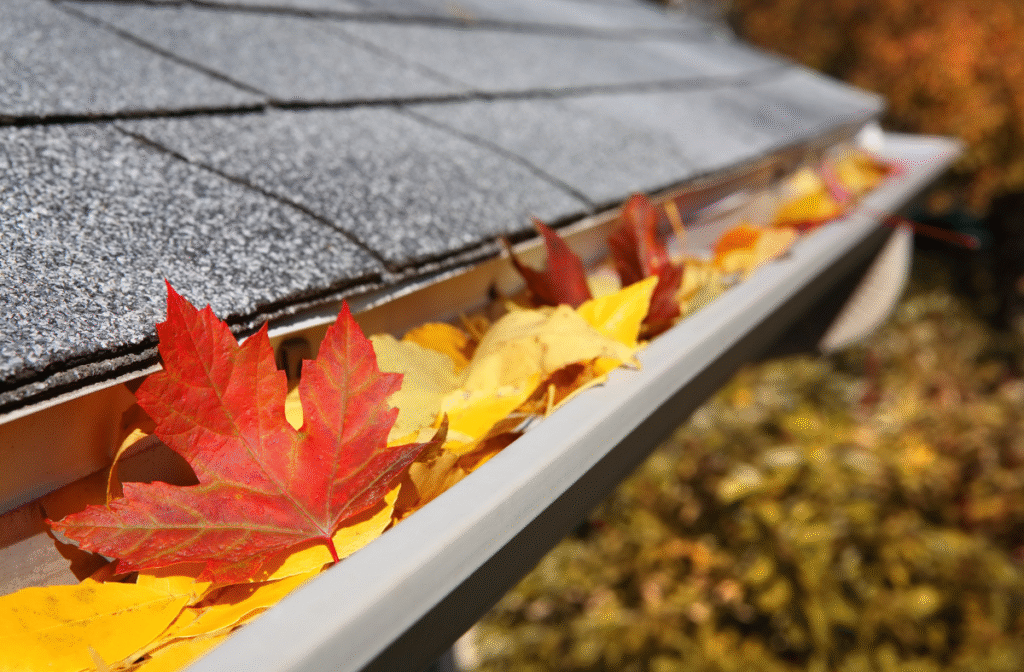Texas weather is known for being unpredictable. One week, the sun is shining, and the next, a storm rolls in with heavy rain, wind, and hail.
When those rainy seasons arrive, your roof becomes your home’s first line of defense. If it isn’t properly maintained, water can find its way inside, leading to leaks, rot, mold, and expensive repairs.
That’s why every homeowner should have a reliable plan for roofing maintenance during rainy seasons. A little preparation goes a long way toward keeping your home dry, safe, and comfortable.
In this guide, we’ll cover what to inspect, clean, and repair before and during wet weather so your roof stays strong when the storms hit.
Table of Contents
Not sure if you should repair or replace your roof? Give us a call for FREE roof inspection
Why Roofing Maintenance for Rainy Seasons Is So Important
Your roof is constantly exposed to the elements, but rain is especially destructive over time. Water can seep into small cracks. It can loosen shingles and rot wooden components if left unchecked. A single leak can cause thousands of dollars in damage to your home.
Regular roof maintenance during rainy seasons helps you prevent those problems before they start. It keeps your home dry, extends your roof’s lifespan, and saves you from major repairs.
Moisture also affects energy efficiency. When water damages insulation or ventilation, it traps heat and humidity inside your attic. That means your HVAC system works harder and your energy bills go up. Maintaining your roof helps you avoid that hidden cost while protecting your investment.
How Texas Weather Impacts Roofs
Texas roofs face unique challenges because of the state’s wide range of climates. Along the Gulf Coast, heavy rain and humidity promote mold and corrosion. In Central Texas, spring and fall storms can bring wind and hail that damage shingles and flashing. North and East Texas often experience weeks of consistent rainfall, which can overwhelm gutters and cause leaks.
No matter where you live, your roof needs to be ready for long stretches of wet weather. Roofing maintenance for rainy seasons is about staying one step ahead of problems. With regular inspections, cleaning, and small repairs, you can make sure your roof keeps doing its job.
Pre-Rainy Season Preparation
Before the rainy season begins, it’s important to perform a thorough inspection and address any vulnerabilities. Taking care of these issues early helps you avoid emergency repairs when the storms arrive.
Pre-Season Preparation Tips:
- Inspect the entire roof for loose, missing, or damaged shingles
- Check flashing and sealants around chimneys, skylights, and vents
- Clean gutters and downspouts so water can drain freely
- Trim overhanging tree branches to prevent debris buildup
- Schedule a professional inspection if it’s been more than a year since your last one
Begin by walking around your home and examining the roof from the ground. Look for shingles that appear cracked, curled, or missing. Damaged shingles are weak spots where water can easily penetrate.
If you see exposed underlayment or dark streaks, that’s a sign that water may already be seeping beneath the surface.
Next, inspect flashing and sealant around roof penetrations. These areas are especially vulnerable during heavy rain because water tends to pool and flow toward them. If the caulking looks cracked or dry, reapply sealant to prevent leaks.
Gutters are another critical part of your roofing system. Clogged gutters cause water to back up onto the roof, where it can soak into shingles and decking. Clean gutters thoroughly and make sure downspouts direct water at least a few feet away from your home’s foundation.
If you have large trees near your roof, trim back branches that hang over it. Falling limbs or heavy debris can damage shingles and clog gutters during storms. Finally, if you haven’t had a professional roof inspection in a while, schedule one before the rainy season starts. Roofing experts can spot issues that may not be visible from the ground.
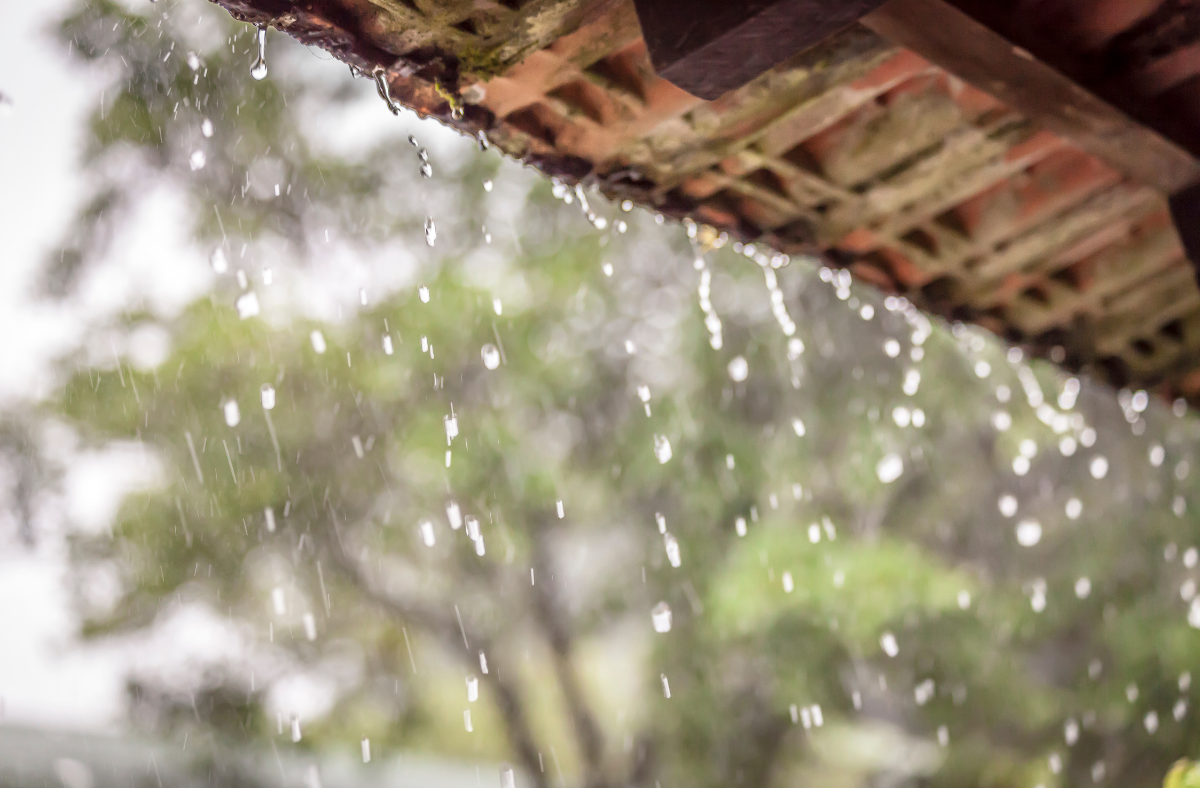
During the Rainy Season
Once the rain starts, maintenance shifts from preparation to monitoring. Even the best-maintained roof can develop issues under heavy rainfall, so it’s important to stay alert for warning signs.
Tips for Roofing Maintenance During Rainy Weather:
- Watch for leaks, stains, or drips on your ceilings or walls
- Listen for dripping sounds or water movement in the attic
- Check the attic after major storms for damp insulation or musty smells
- Keep gutters clear of debris throughout the season
If you notice water spots forming on your ceiling or walls, don’t ignore them. Even a small stain can indicate a leak. Check your attic for damp insulation or water pooling near vents and beams. Musty odors are another sign that moisture is trapped inside.
Keeping gutters clear throughout the rainy season is also essential. Leaves and debris can accumulate quickly during storms, especially if nearby trees shed branches or pollen. Overflowing gutters lead to roof rot, siding damage, and foundation problems.
You can also walk around your property after heavy rainfall and observe how water drains from your roof. If you notice water spilling over gutters or pooling near your home, it may be time to call a professional to improve your drainage system.
Common Rainy Season Roof Problems
Even with good maintenance, certain issues tend to appear during prolonged rainy periods. Knowing what to watch for helps you catch them early and prevent expensive repairs.
Common Problems to Look For:
- Clogged or overflowing gutters
- Missing or loose shingles
- Damaged flashing or vent boots
- Leaks around chimneys, skylights, or eaves
- Moss or algae growth on shaded roof sections
- Sagging or soft spots in the decking
Clogged gutters are one of the most frequent issues during rainy seasons. When water can’t flow off the roof, it collects near the edges and seeps under shingles.
Loose or missing shingles can also allow moisture to penetrate. Wind-driven rain often exposes these weaknesses, especially near the roof’s edges and peaks.
Flashing and vent boots should be checked regularly. They seal gaps where different roof materials meet, but constant exposure to heat, cold, and moisture causes them to crack or separate. Replacing a piece of flashing or a rubber boot is far cheaper than repairing interior water damage later.
Moss and algae can also become a problem during long wet periods. While they might look harmless, they trap moisture that accelerates shingle decay. A professional roof moss cleaning can safely remove growth without damaging the surface.
Lastly, if you notice soft spots or sagging areas, contact a roofing professional immediately. These are signs of water-damaged decking, which can lead to roof damage problems if ignored.
Roof Cleaning and Moss Prevention
Regular cleaning is an important part of roofing maintenance for rainy seasons. Dirt, leaves, and organic material retain water and prevent your roof from drying properly after rain.
To clean your roof, use a garden hose and a soft brush or broom. Avoid high-pressure washing, which can dislodge granules from shingles and weaken their protective surface. If you see moss or algae growth, apply a mild cleaning solution designed for roofs and rinse gently.
Preventing moss in the first place is even better. Keep nearby trees trimmed to reduce shade and allow more sunlight to reach your roof. You can also install zinc or copper strips near the ridge of your roof. Rainwater running over these metals releases natural minerals that prevent moss and algae growth.
Do NOT do anything that puts you in danger. If your roof is high, steep, or complicated, we don’t recommend that you go on your roof. Call a professional like M&M.
The Importance of Proper Ventilation
Ventilation might not seem related to rain, but it plays a critical role in protecting your roof during wet weather.
Without proper ventilation, humid air gets trapped in your attic, creating condensation that seeps into the roof structure. Over time, that moisture causes rot and weakens the materials.
Check that your soffit and ridge vents are clear of dust, insulation, or debris. If your attic feels overly hot or humid, you may need more ventilation. A balanced system allows air to flow in and out evenly, keeping your roof dry from the inside out.
When to Call a Professional Roofer
Some roof maintenance tasks are relatively safe for homeowners, like cleaning gutters or trimming branches. But when it comes to inspections, repairs, or cleaning steep roofs, it’s best to call a professional.
You should contact a roofing company like M&M Roofing, Siding, and Windows if you notice any of the following:
- Leaks or water stains on ceilings or walls
- Missing or damaged shingles
- Sagging rooflines
- Persistent mold or moss growth
- Rusted or cracked flashing
- High energy bills caused by poor ventilation
We have the training and safety equipment to inspect your roof thoroughly and perform repairs correctly. We can identify hidden damage, reinforce weak spots, and ensure your home is ready for whatever weather comes next.
And we can help you decide whether you need to repair or replace your roof.
How Often Should You Schedule Roof Inspections?
In Texas, homeowners should schedule at least one professional roof inspection per year and an additional one after major storms.
The best time for an annual inspection is right before the rainy season begins. That gives you time to repair small problems before they’re exposed by heavy rainfall.
Stay Dry All Year Long
Your roof is your home’s shield against the elements. Taking time for roofing maintenance during rainy seasons keeps that shield strong, prevents costly repairs, and ensures your family stays dry and comfortable.
By cleaning your gutters, inspecting your shingles, trimming branches, and scheduling regular professional inspections, you can protect your roof and your home for years to come.
If you’re ready to prepare for the next round of Texas storms, contact M&M Roofing, Siding, and Windows today for a FREE roof inspection. Our experts will make sure your roof is ready to handle even the heaviest rain.
We have more than 40 years of experience and 1,200 positive reviews. We would love to help you! Contact us today!
M&M Roofing, Siding, and Windows has been serving Texas homeowners for over 40 years. Call us or complete the request form to schedule a FREE roof inspection and consultation.

